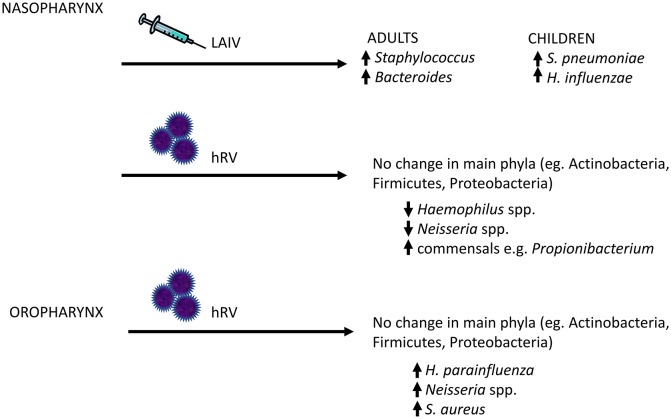Figure 3.
Changes in the human upper respiratory tract microbiome following viral exposure. Given that bacterial pneumonia frequently arises as a result of aspirated bacterial pathogens, a potential mechanism by which viral infections might increase the risk of secondary bacterial infections is through increased colonization of the upper respiratory tract by bacterial pathogens. In human subjects, live attenuated influenza vaccine (LAIV) and human rhinovirus (hRV) have been shown to disrupt the local host bacterial community, with increased relative abundance of potential pathogens (or pathobionts), such as Staphylococcal and Neisseria species. The major changes in the upper respiratory tract microbiome are highlighted here.

